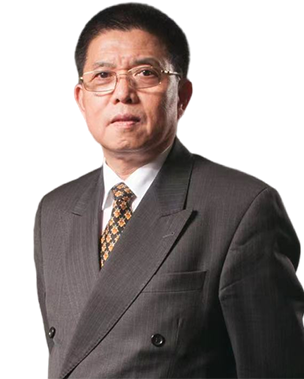Trade and Environment: WTO Agreement on Environmental Products is expected to restart negotiations
The global environmental degradation caused by climate and environmental change has become a common problem faced by all mankind. Among them, the environmental impact of the cross-border flow of goods and services, that is, international trade, has also been the focus of the multilateral trading system. As early as 35 years ago, in the Uruguay Round negotiations initiated by the then General Agreement on Tariffs and Trade, the contracting parties began negotiations on trade and environment issues and made the "Decision on Trade and Environment". The WTO, which was later established to implement this decision, established the Environment and Trade Commission in the WTO, which is specifically responsible for discussing environmental and trade issues. Since the establishment of the WTO, in the absence of multilateral rules, some developed countries have deliberated and prepared to implement measures in their domestic laws to raise tariffs on products imported from countries with low environmental standards. For example, the EU is about to implement a "carbon tariff" on imported products. Another example is the Trump government's assertion that products produced without meeting environmental standards are considered subsidies and can be subject to a countervailing tax. Without a fair and equitable international trade rule, the environmental policies of developed countries are prone to discrimination against the trade activities of other countries, especially developing countries. For decades, WTO members have been seeking a fair and equitable balance between trade and the environment in order to achieve the goal set out in the Agreement on the Establishment of the World Trade Organization, namely, "to seek measures that not only protect and maintain the environment, but also adapt to the needs of their respective economic development levels."
On the issue of environment and trade, since 2014, 18 WTO members have organized to negotiate the Environmental Goods Agreement (EGA). So far, 18 rounds of negotiations have been conducted. The 18 WTO members are the European Union (representing its 28 member countries), Australia, Canada, China, Costa Rica, Hong Kong, Iceland, Israel, Japan, South Korea, New Zealand, Norway, Singapore, Switzerland, Liechtenstein, Chinese Taipei, Türkiye, and the United States. The 18 WTO members participating in the negotiations account for the majority of global trade in environmental products. The purpose of the negotiations is to reduce taxes on environmental products and promote free trade in environmental products. The negotiations are based on the APEC Environmental Product List, covering 54 types of low energy and low-carbon green products, mainly including products with the following functions: generating clean and renewable energy, improving energy and resource efficiency, reducing air, water, and soil pollution, managing solid and hazardous waste, reducing noise, and monitoring environmental quality. The negotiating members advocate that multilateral trade should be able to make a positive and meaningful contribution to addressing the issue of environmental degradation, in order to promote the implementation of the Paris Climate Change Agreement and the United Nations 2030 Development Agenda. The parties further discussed the realization of free trade in environmental products under the WTO framework, and will benefit all WTO members through the most favored nation treatment of the negotiation results.
As one of the initiators of the EGA negotiations, China has always participated in various EGA negotiations with a positive and constructive attitude, made great efforts, demonstrated due flexibility, and made important contributions to promoting progress in the negotiations. During the negotiation, all parties have different interests and demands, and there are differences on which environmental products are covered by the agreement and the extent of tariff reduction for environmental products. For example, China and the European Union disagree on the issue of tariff reduction on bicycles in the EU. China requires the reduction of import tariffs on bicycles, which are sensitive products of the EU. The domestic bicycle industry in the EU has been protected by tariffs. In the past two decades, the EU has also imposed additional anti-dumping duties on Chinese complete bicycles and bicycle parts. Finally, the EU agreed that the agreement could include some bicycle parts, but not the entire bicycle. China has expressed its willingness to accept this compromise. For example, there are differences between the United States and Canada on whether to include wooden pallets in the agreement; The United States promotes the agreement to cover high-tech batteries, but China has been reluctant to agree to this requirement.
At the end of 2016, negotiations stalled due to the US presidential election, and the Trump administration has since refused to continue negotiations. After Biden took office in 2021, the US government promised to actively participate in the WTO negotiations on environmental sustainability. The newly appointed US trade representative, Catherine Day, recently stated that the US would actively promote the negotiation of the Environmental Products Agreement. This shift in the United States is primarily based on its own interests, as the negotiations and eventual consensus reached by EGA will promote green manufacturing in the United States to produce more clean technology products and increase employment opportunities in the United States. The United States has a certain comparative advantage in clean energy, and the tariffs on clean energy products under early negotiations in the United States are already very low. In contrast, many other countries participating in the EGA negotiations impose high tariffs on clean technology products manufactured in the United States, up to 50%. Cutting tariffs on these environmental products will undoubtedly open up foreign markets for green products in the United States and stimulate other countries to purchase American clean technology.
If the EGA negotiations are successful and can be implemented, this will be another plurilateral agreement for products in the WTO after the 1996 Information Products Agreement and the 2015 Information Products Expansion Agreement. We will wait and see how the negotiation process and prospects will be.
(This article is translated by software translator for reference only.)
Related recommendations
- Tax lawyers review the draft of the revised Tax Collection and Administration Law for soliciting opinions
- New Measures for Punishing "Dishonesty" by the Supreme People's Court at the Two Sessions in 2025 (Part 3): "Height Limit" Single Release Mechanism
- New Measures for Punishing "Dishonesty" by the Supreme People's Court at the Two Sessions in 2025 (Part 2): Grace Period System
- Interpretation of the Management Measures for Compliance Audit of Personal Information Protection - Feeling the Rhythm and Rhythm of Regulatory Flow




